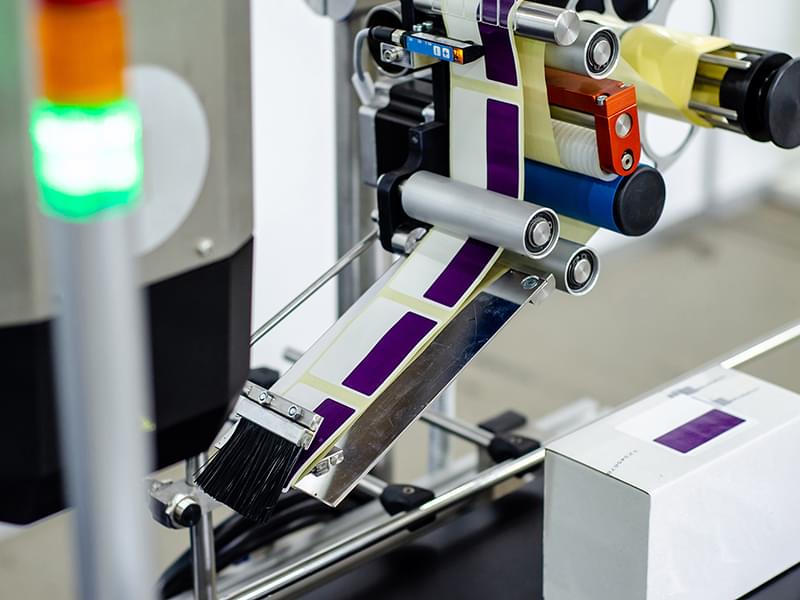Changes in global and regional markets, evolving consumer demands and the ramp up of sustainable technologies are driving growth in label and release liners, according to a new study from Smithers.
The Future of Label and Release Liners to 2026 forecasts that the labels market will reach $48,317 million in 2026, with a 3.0% average annual growth rate from 2021.
Impact of COVID-19
The ongoing COVID-19 crisis of 2020 – 2021 caused massive disruptions to global and regional economies, interrupting marketplace trends which have been apparent for some time. The interaction of these trends drives local and global commerce - and thus the usage of labelling materials and systems - are likely to follow trajectories in place prior to 2020, with certain adjustments for disruptions and delays caused by the COVID-19 pandemic across 2020 and early 2021. Early signs suggest that these disruptions may begin easing in H2 2021.
Market drivers
Beyond the unprecedented effect of COVID-19, several key drivers are at play in the labels and release liners market. In the mature economies, label / release liner growth closely follows GDP, while in developing economies, growth in consumer wealth will increase use and sophistication of labelling practices.
Economic growth - After the pandemic-related disruptions of 2020-21, global economic growth is expected to gradually return to more normal growth trajectories in 2022. The long-term effects of strained US-China relations and the aftermath of BREXIT in Western Europe may modestly depress economic growth, particularly in the immediate regions.
Population trends – Demographic influences are impacting labels and release liner consumption trends. In the West, an aging population is driving smaller and more convenient packages and single-person households prefer convenience items that save preparation time. Meanwhile, the rapid population and income growth and urbanization taking place in emerging markets is driving higher demand for more packaged goods as well as more sophisticated packaging. The increase in multi-generation households globally will combine to favor labelling, packaging and merchandising that deliver time-saving convenience, ease of use, re-closable designs, and environmental responsibility.
Regulatory requirements - Increasing consumer awareness and concern for packaging’s contribution to global environmental stress, and increasingly stringent regulatory regimes, will accelerate adoption of more efficient labelling and packaging material and designs. More efficient systems to minimize and recover packaging wastes will also grow in importance. Environmentally focused trends likely to be among the most prominent over the next five years include circular-economy requirements, especially in the EU zone, and waste reducing products and packaging.
Smart labels
Smart or intelligent labels can provide consumers with a breadth of product information, guidance for use, promotional information, etc. all conveniently at the point of purchase. Some brand owners, store owners, and distribution channels partners are using smart labels to monitor and track package location and history, condition and exposure history, potential diversions or other security issues, etc. Smart label systems rely upon a variety of electronics and communications components and supporting networks of business information management infrastructure.
Release Liners
Release liners are paper or plastic films, especially treated to adhere only modestly to the PSA label – just enough to hold the label in place until it is pealed away, and the label attached to its permanent home. Although a variety of surface effects and “release agents” are employed to minimize adhesion, the majority of release liners are constructed with a thin coating of silicone polymer. The most common release liner substrates are paper, but a variety of polymer films are also employed.
“Liner-less” labels are PSA labels whose face has been treated with a specially formulated coating to be partially resistant to the especially formulated PSA adhesive on the reverse face. Liner-less release systems are especially attractive in terms of sustainability and waste minimization, since 40%–50% of the mass and volume of the label as supplied must be discarded to waste at the point of application. These liner-less PSA label systems are becoming more popular as the technology evolves, making them more economically attractive.
Sustainable packaging
As sustainability goals and regimes are increasingly implemented by governments, brand owners are adopting more efficient packaging material and designs, and more efficient systems to minimize and recover packaging wastes. Flexible packing will continue to displace rigid packaging from 2021 to 2026, for a variety of economic, convenience and aesthetic reasons and smart labels will gain momentum especially with high value or perishable products in logistics-intensive channels. Particularly in the foods sector, flexible packaging provides weight and space savings along the distribution / logistics chain, and in the retail environment, improved consumer convenience, package size and reclosability, and new brand identity and merchandising options.
Mature economies continue to emphasize waste reduction in product and packaging / labelling design and manufacturing processes. Light-weighting, thin-walling, and down-gauging will be a prevalent theme for primary, secondary and transit packaging and associated label systems. For labelling processes, in particular, more readily recycled, thinner gauge plastic film label stock will become more popular, as will liner-less release label constructions.
